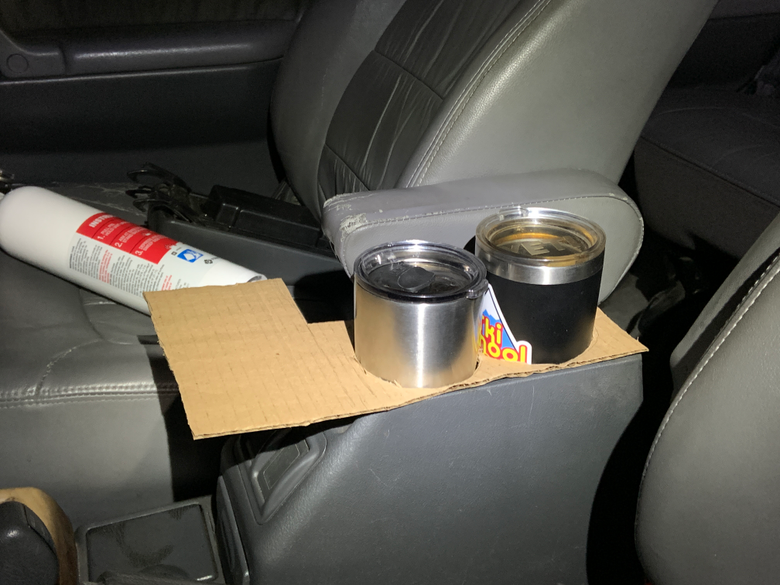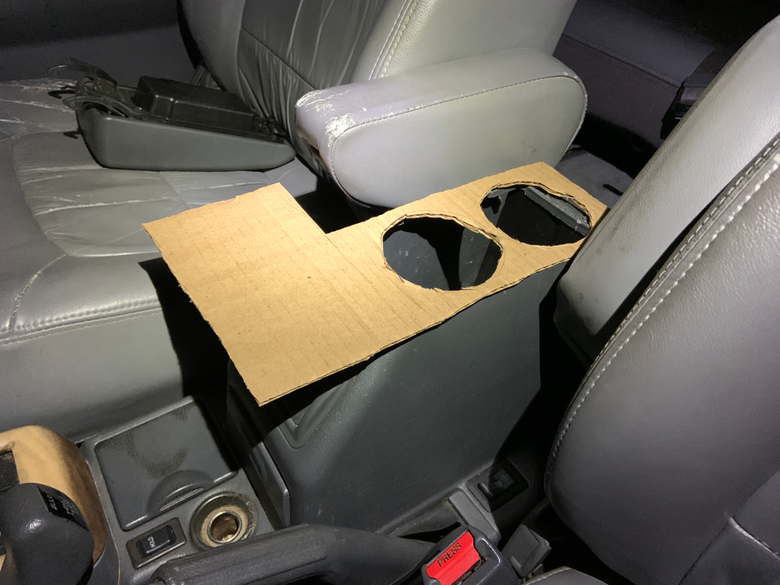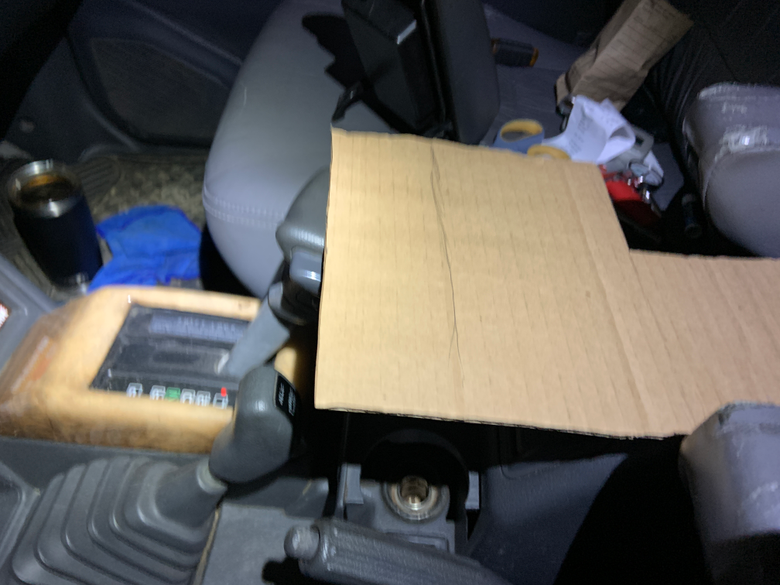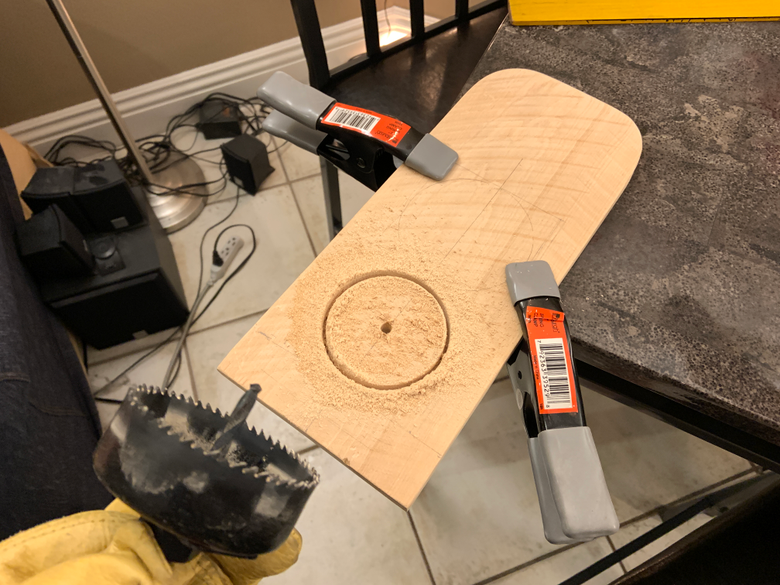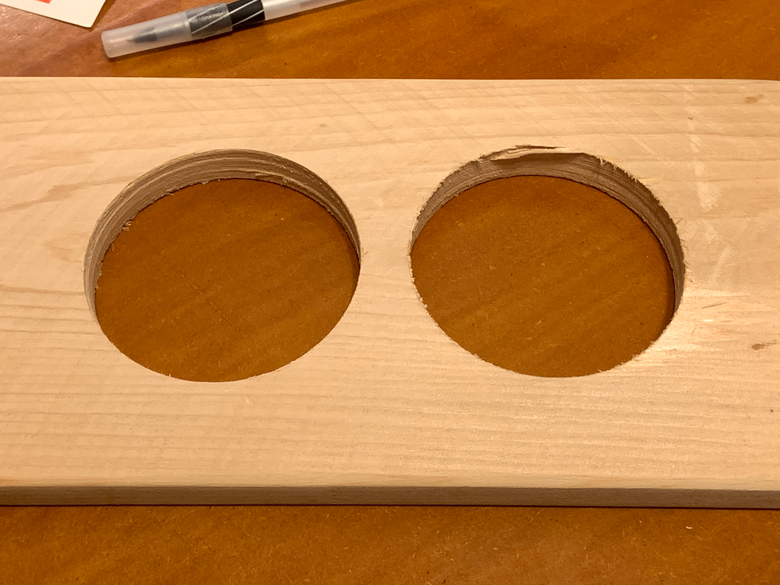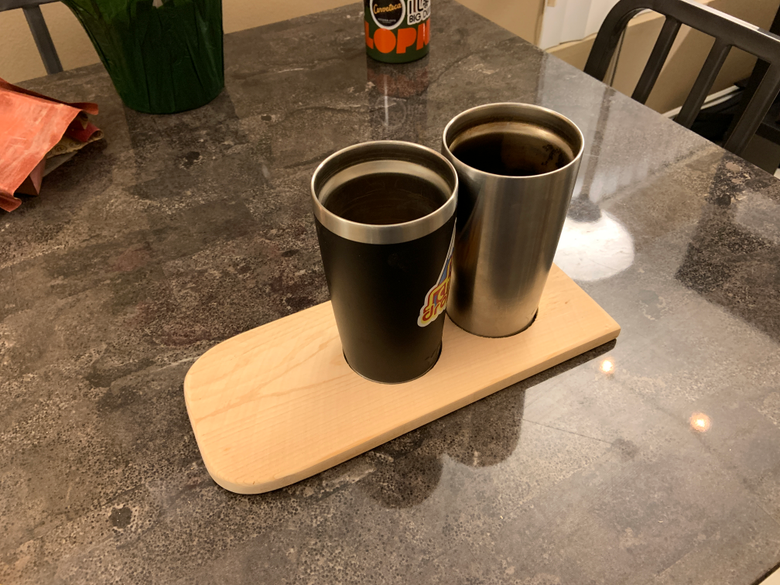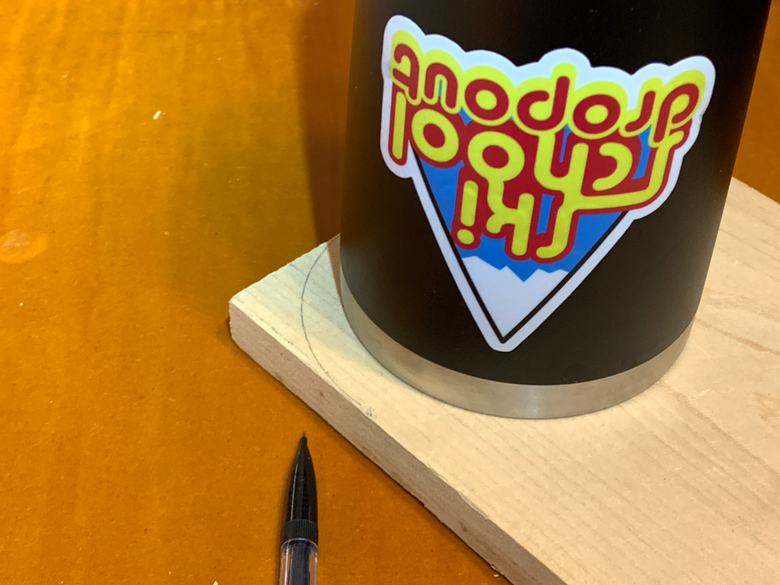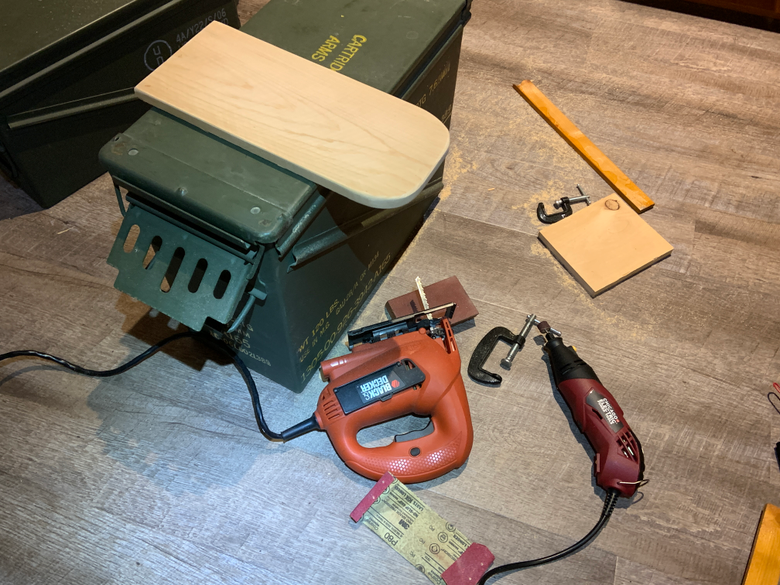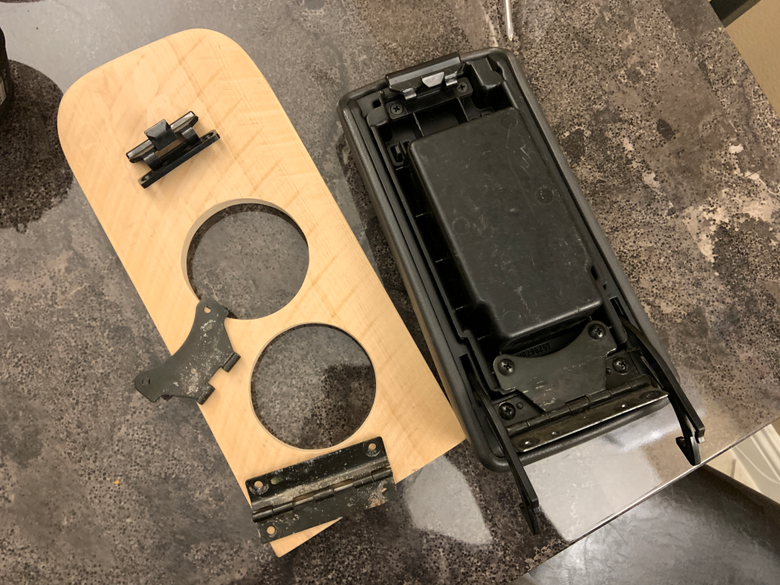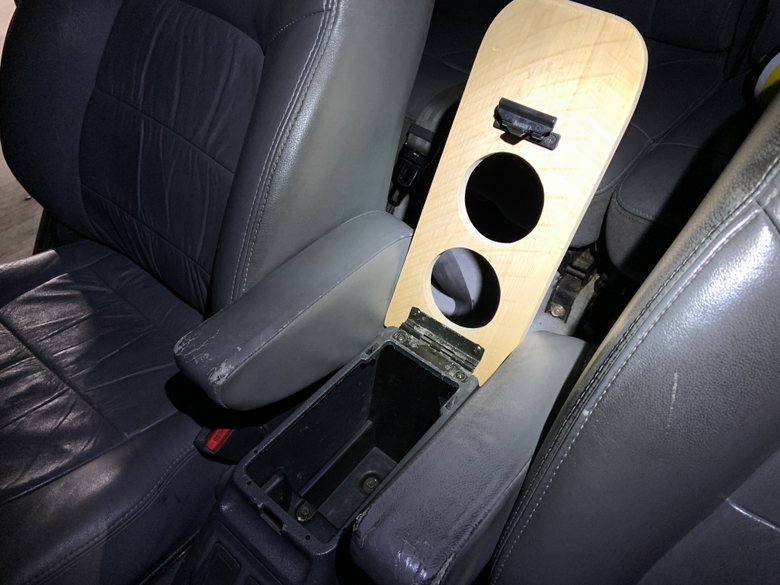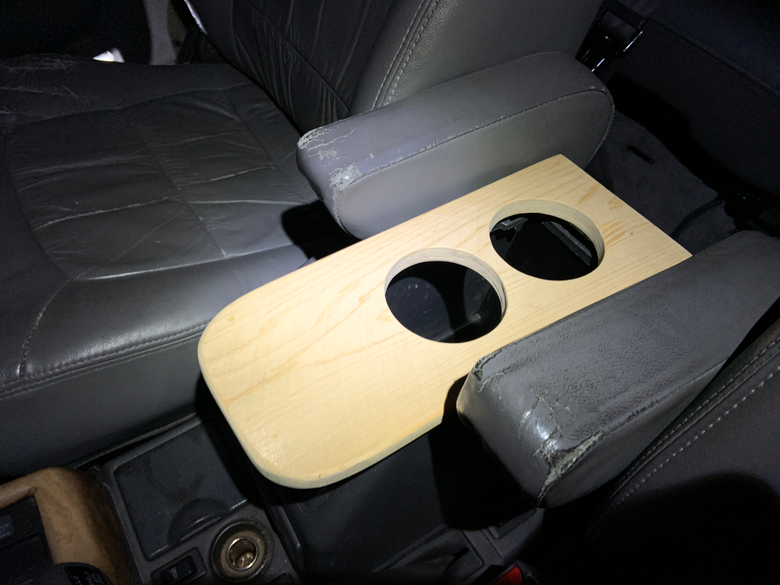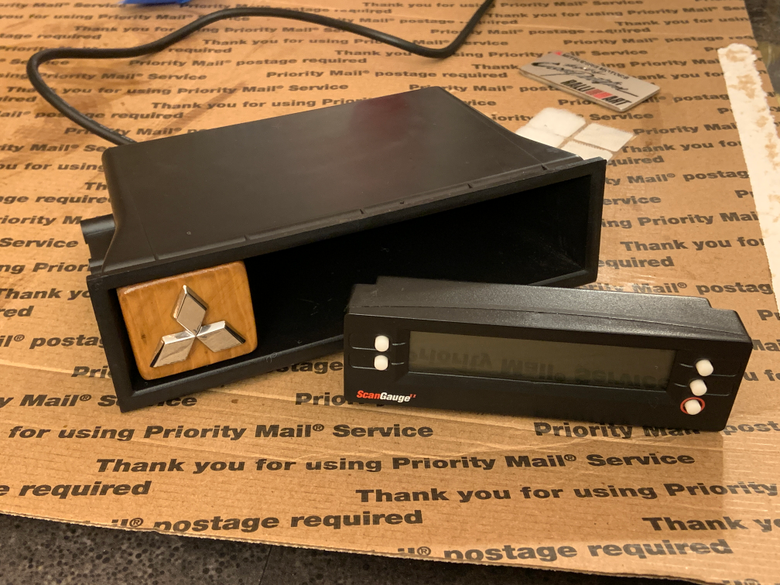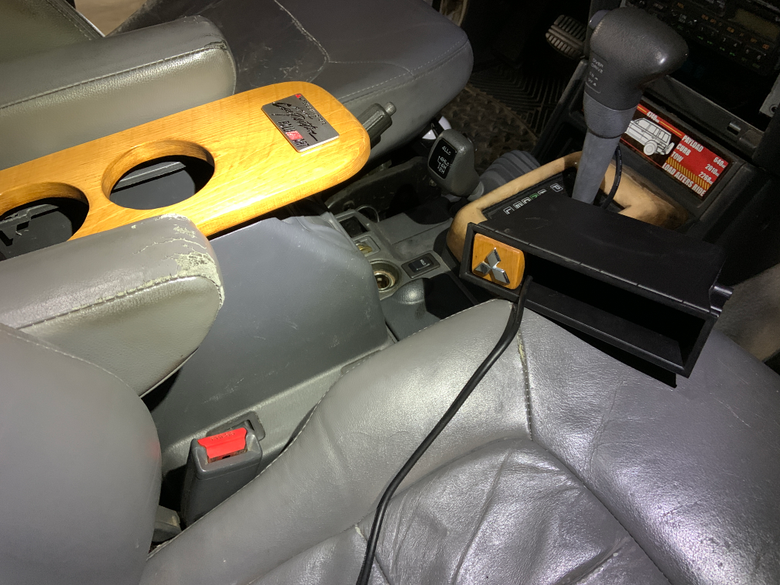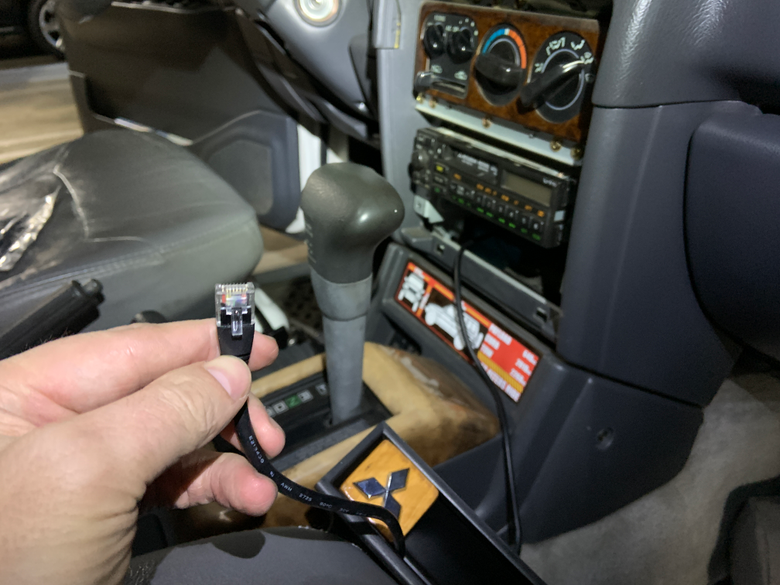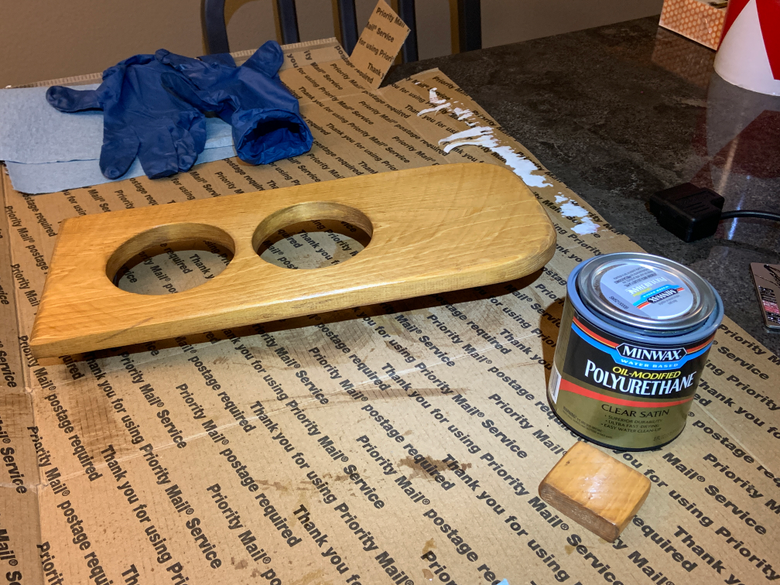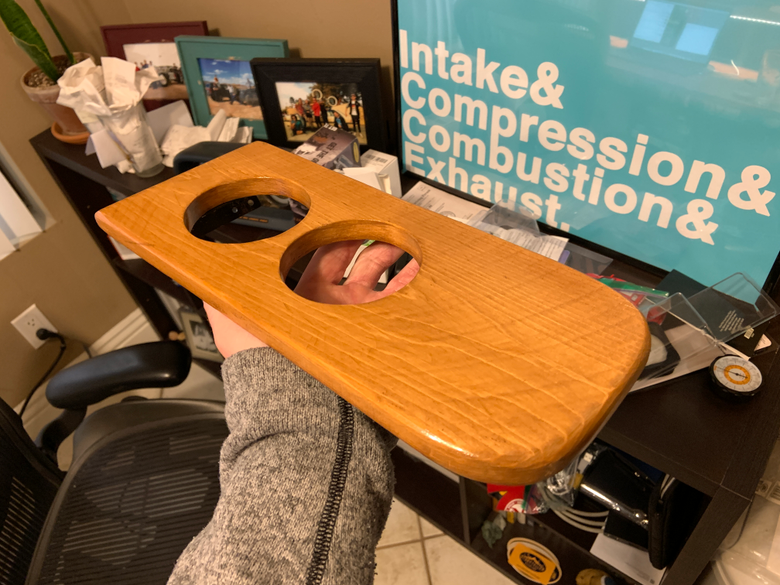Building My Own Center Console Lid Was My Favorite Car Project Yet
I like cars more than furniture, but I'm discovering that I enjoy carpentry more than mechanics. So, I documented the process of building a custom console for my SUV to give you some insight and inspiration if you're considering such a project yourself.
(Full Disclosure: This is a writeup on how I built and decorated my console. My way is not the only way, nor necessarily the best way. Constructive criticism is welcome but understand this is no definitive guide to woodworking or car interior design.)
Let's plug in some tools and start hacking already!
The Vehicle: A 1998 Mitsubishi Montero; a medium-large off-roady sport utility vehicle.
The Objective: My wife and I enjoy drinking coffee while underway on road trips but the gen two Montero's factory cupholders are laughably inadequate. The vehicle needed two cupholder slots that could fit Yeti tumbler coffee cups securely enough so they wouldn't spill or flop over while driving off-road. Also, it had to look good.
The Aesthetic: My Montero's final look will be a hybrid between Budget Overland and '90s/2000s Tuner Car with an interior that's primarily Old Luxury with a few dashes of Sporty.
As you can gather if you bothered to read that, I have a specific vision here and wouldn't outsource this project even if I could afford to. It'd be too hard to articulate what I'm going for. Besides, making things is the best way to learn how to make things!
But First: A Note On PPE
I come from a Safety Third family. Every time I put glasses, gloves, and headphones on before starting a saw I think about how my opa or my old man would be laughing at me.
But I'm also missing a finger and know what it feels like to have carburetor cleaner in my eye.
Wear protective personal equipment when you're sawing, sanding, and such. Every time. Or learn to the hard way. Which, I promise, you'll hate.
Conceptualization
If anything you make at your kitchen table is going to look remotely polished or "professional" in the cab of a truck, it has to be simple. It has to fit into the existing design of the vehicle rather than try to redefine it or stand out in a bold way.
So in my case, I decided early on that my custom center console would actually just be a custom lid for the factory console; I'd even attach it using factory hardware. This strategy paid off big time because it gave me clear and constrictive parameters to do my designing in.
If you're an amateur when it comes to woodworking, like myself, heed one of the oldest mantras in the trade: "Measure twice, cut once." You can follow that metaphorically, too. What I mean is: Think long and hard about what you want to make before you start on the final draft.
To this end, I began in CAD. The idiot's CAD: "Cardboard-Aided Design." (As opposed to "Computer-Aided Design," which is how a professional would begin a fabrication project.) Doing real CAD on a computer requires skill. But if you just make shit out of cardboard, you can wing it and work backward.
After removing the factory plastic lid I wanted to replace, I cut a piece off a box I found in my building's recycling in approximately the size I wanted my console to be, placed it in the spot, and started trimming.
I cut two rough holes about the size of Yeti cups, test-fit said cups, and eventually ended up with a rectangle with two cup holes, confirming that I had a viable size.
Early Shaping
My original plan was to try and make an interesting asymmetrical shape for the console lid, but quickly realized a point I made a few paragraphs ago: The simpler kept, the easier executed. And, for the unskilled, the easier executed... The better-looking the result.
"A rectangle it is!"
I triple-checked that my final rectangle lid dimensions wouldn't interfere with the operation of the seats, shifters, or handbrake. Using a measuring caliper, I also confirmed the diameter of my cups and made sure the well of the existing console was in fact deep enough to accommodate big beverages.
With dimensions settled on, I set to the wood.
Picking what type of wood to use was easy: I had a pile left over from another project, so whatever that was would work perfectly. Probably.
Since I don't have a circular saw, a table saw, or the space to operate either really, I made my straight cuts with a jigsaw. A jigsaw's main purpose is to cut non-straight lines, but if you line the edge up with a ruler you can make it work. Here's a good instructional clip on how to do it if you happen to be in the same situation. (Make sure you've got a wood blade for cutting wood!)
I knew I'd be able to dial in the edges with sandpaper... as soon as I realized the wood I ended up with was pretty soft. The cup holes were going to have to be a bit more precise, though. For that I bought a hole saw, which is basically just a really, really big drill bit.
Hole saw hot tip: If you can, drill your hole halfway through from both sides rather than all the way through from one side. That leaves you with much cleaner edges and fewer splinters.
But of course, the Harbor Freight hole saw kit I got didn't have the exact size I needed so I had to bore it just a touch with my off-brand Dremel knockoff rotary cutter. This had to be done extremely carefully, or it'd look uneven. Perfectly round cup holes were/are key to this project looking classy.
I had so much fun running rip cuts with my jigsaw that I got brave. Rounding off the edges of my console lid would make it look way better. So I used a round lid to mark off curves, zipped them off with my jigsaw, and used sandpaper to make the edge looked smooth.
I mentioned that my wood was soft. (Heh.) That ended up being very advantageous–I could easily fine-tune the curves I'd cut and nicely bevel the edges of the console all the way around which made it look very smooth.
Rounding off all the hard edges is really what makes a project like this go from "cast-off piece of wood" to "deliberately created project."
To ensure that my lid would be easy to mount, I just cannibalized the hinge and latch from the factory console. If you do this, don't forget to triple-check placement!
Since the Montero's stock lid was held on with screws, I just drilled little pilot holes with a tiny drill bit and then hand-threaded the screws into the wood through those. (Another benefit of using a softer wood for such a project.)
A common thought process in any car project: "While you're in there, you might as well also..." The military refers to this phenomenon as mission creep. Knowing when to listen to, and ignore, the instinct to add elements to your projects is a critical skill for a craftsperson. I might not be quite there yet.
Cutting wood reminded me of another project I wanted to do: install a rectangular gauge I had into a slot in the dashboard below the radio. The gauge, a digital OBD-reading ScanGauge II, fit but left an open hole that looked odd and didn't fit anything.
To connect it to my vehicle's OBD-II port, I simply removed the tray, drilled a hole in it to run a wire through, and fitted a grommet to make it look nice and tidy.
My solution, now that I had little chunks of wood lying around, was to cut a small block that would fill out the slot. I had found a perfectly-sized emblem by sheer chance weeks previously and had a sub-project on my hands:
But, since that little wood piece is the same wood as the console – I stained and coated it at the same time too – it makes both elements look like parts of a cohesive cab design.
I opted to sand, stain, and polyurethane-coat my lid and block because I wanted a medium-dark natural wood looking finish that would also feel heavy and slightly glossy.
Initially, I'd hoped to use an ultra high-gloss clear coating to match the super shiny faux plastic wood around the shifter and radio bezel. But I did some research on the subject and learned that the glossier a finish, the easier it'd be to spot mistakes.
Since I anticipated making mistakes aplenty, I went the opposite way and grabbed a satin-finish polyurethane which ended up giving me decent-but-subtle gloss.
Staining wood is pretty easy: Just stir, don't shake, and brush on lightly. Each coat gets it a little darker. But a stained wood will often still just look like... wood. Rather than a finished thing, I mean. The polyurethane coating you put on top (or, three coats of poly in my case) is what gives it that truly "completed" look. And, of course, shininess.
Final Touches
I ordered a bunch of decals and emblems for fun from a Hong Kong website and, months later, a package arrived which included this Mitsubishi/Ralliart plaque. I hadn't ordered it; the store threw it in with my stuff as a consolation because it was out of stock of another thing I wanted.
But I rested it on my console and ended up loving the way it looked, so I peeled the backing and affixed it. Surely, everyone will now be fooled into thinking this console came from a more impressive factory than my dumpy apartment.
Regardless, the result left me satisfied. I invested a lot of hours into this project, but building things from scratch takes a lot of trial and error. Luckily, that's the fun part!
Assorted Musings
If you don't care to read my play-by-play but are still hoping for some bargain basement fabrication tips:
-
Don eye, ear, and hand protection before sawing!
-
Measure twice, cut once
-
Measure twice, cut once
-
Soft wood is easy to shape, cut, and sand.
-
Never shake a can of wood stain or polyurethane coating unless you want bubbles in the finish
-
If you cut a hole to run a wire, use a grommet to make the hole look smooth and eliminate the possibility of your wire getting cut on a sharp edge
-
Keep custom designs simple as you're getting started
-
Work with existing hardware and mounting points as much as you can
Now it's your turn to cut something up and bolt it to your interior. Good luck!


